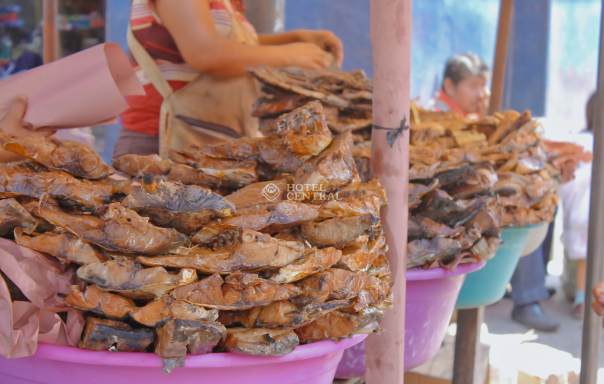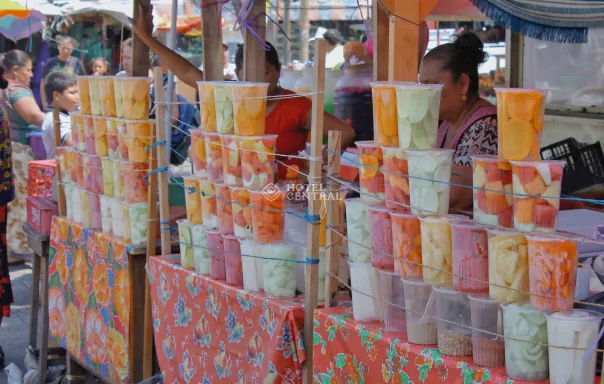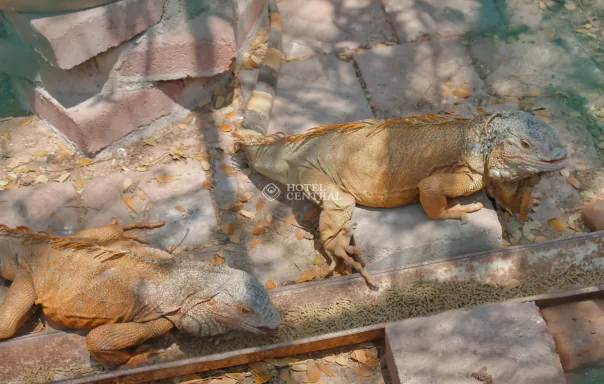Juchitán de Zaragoza, Oaxaca, is a place with a rich history, culture, and nature that showcases its exquisite cuisine, music, as well as its countless cultural traditions such as the traditional festivals “Las Velas,” with dances and tunes that represent the Istmo worldwide.
El Istmo de Tehuantepec, located in southern Mexico, is a region with a rich history and culture. Its population has predominantly kept its traditions alive through crafts, which serve as an expression of their identity.
The crafts of the Istmo de Tehuantepec are highly diverse and crafted from various materials such as clay, textiles, gold, leather, and palm. Each of them holds a special meaning, reflecting the culture and tradition of the region.

The Istmo de Tehuantepec offers a delicious gastronomy that reflects the culture and tradition of the region. In this text, we will explore some of the most popular dishes and beverages of the area.
At the Mercado 5 de Septiembre in Juchitán, Oaxaca, a feast awaits food enthusiasts. From traditional tlayudas to exotic iguana tamales, this region takes pride in its unique gastronomy. Delights include mole negro, quesillo or Oaxacan cheese, tasajo, cecina enchilada, oven-baked tortillas, empanadas, guetabingui, mole de camarón, and much more. Interested in discovering the typical dishes of Juchitán de Zaragoza, Oaxaca?
If you’re unsure about what to do in Juchitán de Zaragoza, discover the destinations it offers for your visit to the Istmo de Tehuantepec.



The Popular Festivals are a series of community celebrations that take place in the Istmo de Tehuantepec, Oaxaca.
Explore the essence of Juchitán de Zaragoza through our collection of photos, where each image captures the rich culture and traditions of one of the most beautiful places in Oaxaca.